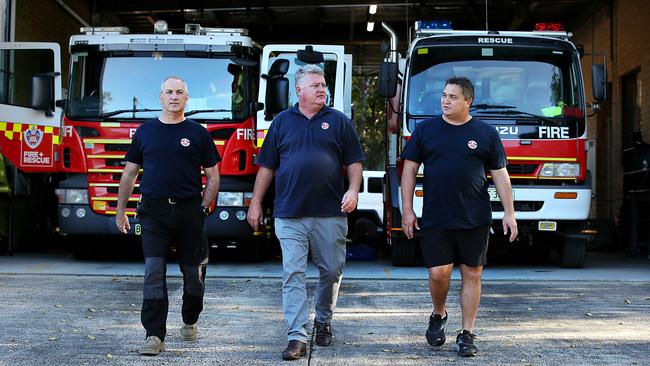Bushfires royal commission: Black Summer leaves fireys begging
Firefighters have called on the bushfires royal commission to recommend a significant increase in federal funding ahead of the next bushfire season.

Firefighters have called on the bushfires royal commission to recommend a significant increase in federal funding ahead of the next bushfire season, as the inquiry heard Australia experienced almost as many firestorms during the Black Summer as it did in the previous three decades.
In a submission to the Royal Commission into National Natural Disaster Arrangements, a consortium of firefighting unions representing 70 per cent of firefighters across the nation said it held “grave concerns about the resourcing and budgets provided to our agencies”.
It submits that “the new reality” of bushfire fighting is not reflected in the number of professional firefighters or the resources available.
University of Tasmania professor of pyrogeography and fire science David Bowman told the commission on Tuesday that firestorms or pyrocumulonimbus events — previously considered oddities — had became the new normal. “Something happened this last summer which is truly extraordinary because, what we would call statistically a black swan event, we saw a flock of black swans,” he said. “That just shouldn’t have happened.”
The joint submission from the NSW, Queensland, South Australian and Western Australian firefighters unions says some of the fleet and equipment available to professional firefighters lacks essential bushfire protections.
They called on the government to treat firefighting with greater seriousness.
“The unions urge the commissioner to consider the need for significant increases in federal funding in the areas identified in this submission to ensure bushfire resourcing and training is a priority ahead of the next bushfire season,” the consortium wrote.
“We know from firsthand experience we need to be better equipped to fight these fires.”
Professor Ross Bradstock of the University of Wollongong told the inquiry the fires were creating their own weather systems and behaviours, a situation he called “very scary”.
This week, the hearing is examining the effectiveness of prescribed or planned burning undertaken ahead of fire seasons.
Senior counsel assisting the commission Dominique Hogan-Doran SC said there was considerable debate about the effectiveness and benefits of hazard-reduction activities.
Professor Bowman said such measures were not as simple as reducing fuel to reduce risk and could even contribute to increased fire risk.
“Inappropriate fire management could drive a system to become more combustible because, for instance, there is much more fine fuel mass such as grass,” he said. “That’s why fire management is so complicated.
“It appears common ground that prescribed burns can mitigate but not eliminate the risks associated with bushfire.”
The commission has received 1735 submissions since March 2.
Of the 1302 individuals who sent in submissions, 45 per cent lived in bushfire-prone areas.




To join the conversation, please log in. Don't have an account? Register
Join the conversation, you are commenting as Logout